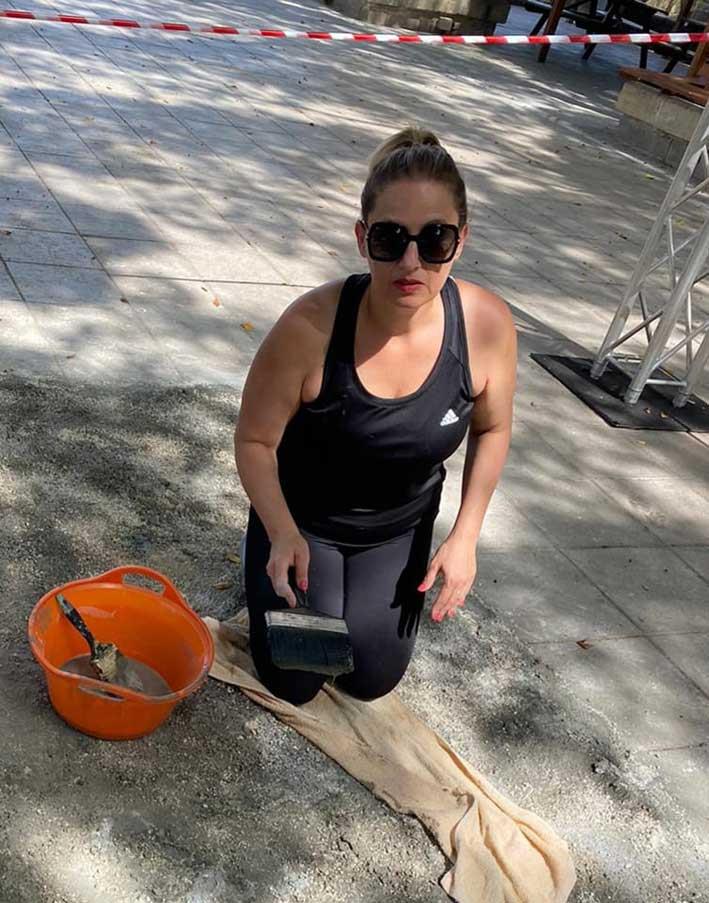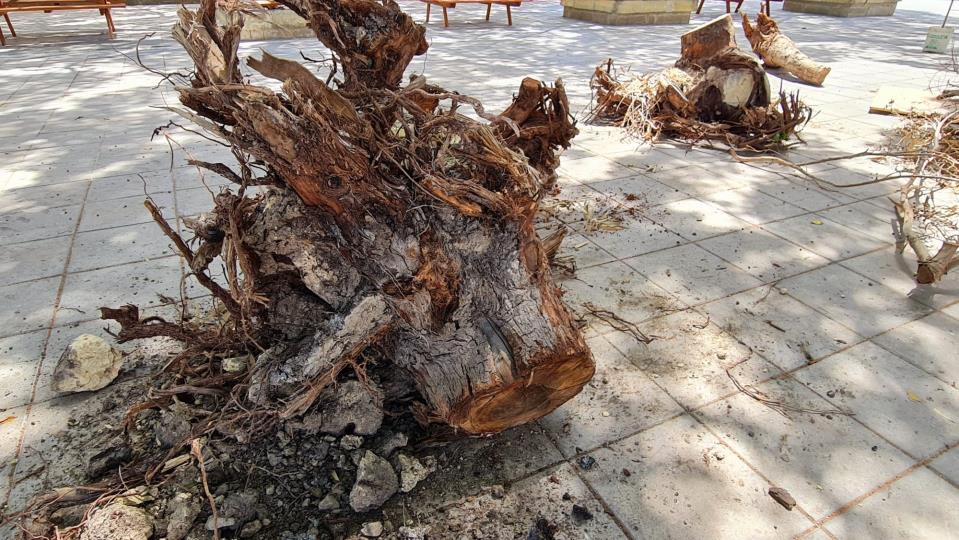"I was driving from Attard to Rabat one day, and I saw workmen chopping down the trees that line the Rabat Road. It made me angry. We have so few trees on this island, and now even the ones that make up the urban roadside landscape were deemed unnecessary," artist Sabrina Debono recalls.
The reason these trees were being uprooted was the Central Link Project, a construction project that aims to link Balzan, Attard and Rabat by significantly altering existing roads and creating a network of new roads between the towns.
Frustrated, Debono began researching and soon discovered that Malta only has 1.1 per cent forestry coverage. "One day, instead of passing by the workmen as they hacked away at the trees, I pulled over, got out of my car, and asked them if I could have the remains of the trees. They were surprised, but they complied, and before I knew it, I had a stack of bark and roots in my back garden."

Within the context of her MA in Fine Art at the University of Malta, Debono realised that her anger could be channelled into a creative outlet to generate awareness and make people question rather than accept what was happening to their immediate surroundings. The concept of biophilia, a term coined by the German social psychologist Erich Seligmann in 1964, and later expanded upon by American biologist Edward O. Wilson, was a source of great inspiration to Debono. Biophilia stresses the idea that humans are innately, emotionally and genetically connected to the natural world. As O.Wilson once said, "Destroying rainforest for economic gain is like burning a Renaissance painting to cook a meal." In other words, the short-term gain never outweighs the loss. "Nature is in our DNA, and by hurting nature, we ultimately hurt ourselves," Debono comments.
By presenting stark images of branches wrapped in restrictive ropes, an open mouth struggling for air in a sea of wet concrete and a hand reaching out of the unfathomable depths of nightmarish construction, Debono's message is clear: Enough is enough.
The aim of her exhibition Enhancing biophilic awareness in society through public art is to encourage discourse around the importance of maintaining humans' connection with the natural world.
"We call it development when buildings and roads are constructed, but in my eyes, the language is all wrong. It's regressive, not progressive," Debono says. "I want to catapult people into an apocalyptic future, where simple bodily functions like breathing become a struggle. This is where we are headed if we replace trees with concrete"
Debono used nature as her palette - quite literally. Soil, leaves, marble dust and wood are just some of the media used in her work. The beauty of nature is juxtaposed with the ugly trauma that human actions inflict upon the natural world.

In many ways, Debono's exhibition is a form of visual trial. The viewer is presented with evidence of the outcome of consistently prioritising construction over growth. Judgement may be pending, but it is clear to see from the twigs that Debono has precariously balanced on cracked glass surfaces that plant life is not getting the nourishment it deserves and needs. "I want this exhibition to shock people. I want people to be confronted with it, even if they weren't even planning on coming to see my work," Debono remarks. "That is why the first works are in a public space -in the quadrangle at the university."
By placing images that demand a reaction in open spaces, Debono hopes to instigate discussion and debate. "This isn't simply about lamenting the loss of the natural world. It's about recognising the state of affairs and changing our interaction with the environment. We need to fall in love with nature again and recognise that there is value to be gained from green spaces."
During this exhibition, a short film will be screened. The remainder of the paintings and sketches will be on display in the outdoor area of the university library from 1st to 5th July.